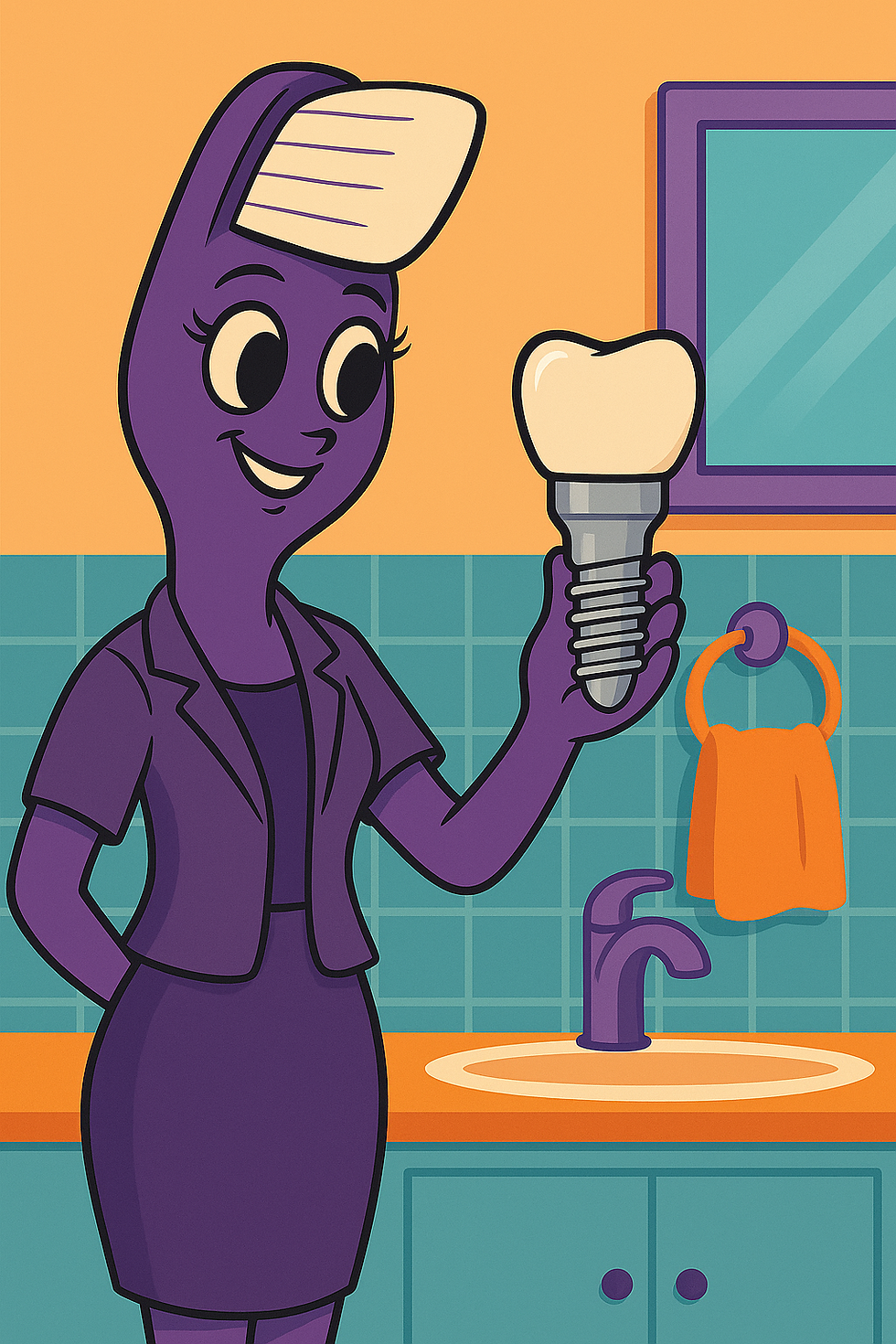Fluoride: Friend, Foe, or Just... Complicated? Unpacking Your Choices.
- naytoghlo
- Apr 16, 2025
- 4 min read
Updated: Apr 23, 2025

Hey everyone, Dr. Noor here! 👋 Let's dive into a topic that stirs up quite a bit of conversation (and sometimes, strong opinions!): Fluoride.
You've probably heard about it – it's in many toothpastes, sometimes in our water supply, and dentists often recommend it. For decades, it's been hailed as a cavity-fighting champion. But let's be real: you might have questions, maybe even concerns. And you know what? That's completely okay.
In the world of health, it's smart to ask questions and understand what you're putting in or on your body. So today, let's unpack the fluoride discussion – why dentists often recommend it, why some folks feel hesitant, and importantly, explore effective fluoride-free options if that's the path you prefer.
First Up: Why Do Dentists Usually Recommend Fluoride?
From a traditional dental standpoint, fluoride is valued for a couple of key reasons:
Strengthening Enamel: Think of your tooth enamel as a shield. Fluoride incorporates into the enamel structure, making it harder and more resistant to acid attacks from sugars and bacteria.
Remineralization: When acid does start to weaken enamel (the very beginning of a cavity), fluoride can help attract minerals like calcium and phosphate back to the tooth surface, effectively repairing those tiny weak spots before they become full-blown cavities.
Basically, it's seen as a tool to help prevent decay and keep teeth strong.
"Okay, But Why the Fuss?" – Understanding the Hesitancy
Now, let's talk about why fluoride isn't universally embraced. I hear your concerns, and they often stem from valid points:
Fluorosis: Consuming too much fluoride while teeth are developing can sometimes lead to dental fluorosis – white spots or lines on the teeth. While usually mild and cosmetic, it's a known effect of overexposure.
Systemic Exposure Worries: Some people are concerned about the cumulative effect of fluoride intake from various sources (water, toothpaste, food) on overall health, questioning if it's necessary or potentially harmful in the long run.
Personal Choice & Natural Living: Many people simply prefer to minimize exposure to added chemicals or substances, opting for more natural approaches to health and wellness.
Your Concerns Are Valid, and You Have Choices!
Here’s the most important part: Your comfort level and choices about your health matter. If you're hesitant about fluoride, you're not alone, and it doesn't mean you're neglecting your teeth! My goal is to work with you to find the best approach for your specific needs and preferences.
Fortunately, the science behind fluoride-free dental care has advanced significantly. There are effective strategies and ingredients gaining attention, with Xylitol being a major player.
Spotlight On: Xylitol – The Sugar Imposter That Fights Cavities
You might have seen xylitol listed as a sweetener in sugar-free gum or candies, but it's also a star ingredient in many fluoride-free toothpastes. So, how does this naturally occurring sugar alcohol work its magic?
It's pretty clever, actually:
Bacteria Can't Digest It: The main cavity-causing bacteria in our mouths (Streptococcus mutans) love sugar. They eat it and produce acid as waste, which damages teeth. When these bacteria encounter xylitol, they try to eat it too, but they can't metabolize it properly.
Energy Drain: Trying (and failing) to process xylitol uses up the bacteria's energy reserves, making it harder for them to multiply and produce harmful acid.
Less Sticky Bacteria: Xylitol can also make it harder for bacteria to stick to your teeth in the first place.
Neutralizing Acids: Using xylitol can help raise the pH level in your mouth, making the environment less acidic and therefore less damaging to your enamel.
Essentially, xylitol disrupts the cavity-causing process by starving the bad bacteria and making your mouth a less hospitable place for them.
Advanced Fluoride-Free Options: Meeting Specific Needs
Beyond general fluoride-free choices, there are now specialized products designed to tackle specific dental challenges without fluoride. For instance, the X-Pur line from Oral Science offers targeted solutions that we sometimes recommend, especially for patients looking for effective fluoride alternatives:
X-Pur CariØ Toothpaste: This toothpaste often features a high concentration of xylitol (around 25%) and is specifically formulated to reduce the levels of cavity-causing bacteria in the mouth. It's a great example of leveraging xylitol's anti-bacterial properties, making it a strong option even for those considered at high risk for cavities.
X-Pur Remin Toothpaste: This one focuses on remineralization, helping to rebuild and strengthen tooth enamel that has been weakened by acid. It typically uses ingredients like nano-hydroxyapatite, which mimics the natural building blocks of enamel, to achieve this repair without fluoride.
The existence of products like these demonstrates that fluoride-free doesn't mean less effective, especially when formulations are scientifically designed to address cavity risk through different mechanisms like bacterial control and remineralization.
Beyond Your Toothpaste: Non-Negotiable Habits
Whether you use fluoride, xylitol, or another formulation, these habits are the bedrock of a healthy smile:
Awesome Brushing Technique: Twice a day, two minutes each time, gentle circles, hitting all surfaces.
Faithful Flossing (or Interdental Cleaning): Got to clean between those teeth daily!
Mindful Diet: Limiting sugary snacks and acidic drinks makes a HUGE difference.
Regular Dental Checkups & Cleanings: Letting us catch things early and remove plaque/tartar is key, no matter your toothpaste choice!
The Bottom Line: Let's Partner Up!
Fluoride can be a helpful tool for many, but it's not the only path to a healthy mouth. If you prefer to go fluoride-free, advanced options like xylitol-based or remineralizing toothpastes (such as the X-Pur examples), combined with great home care and regular visits, can absolutely support a cavity-resistant smile, even for those with higher risk factors.
The most important thing is open communication. Let's chat about your preferences, your concerns, and your individual risk factors. Together, we can create a personalized plan that you feel confident and comfortable with.
Your smile, your health, your choice!
Dr. Noor N. AyToghlo



Comments